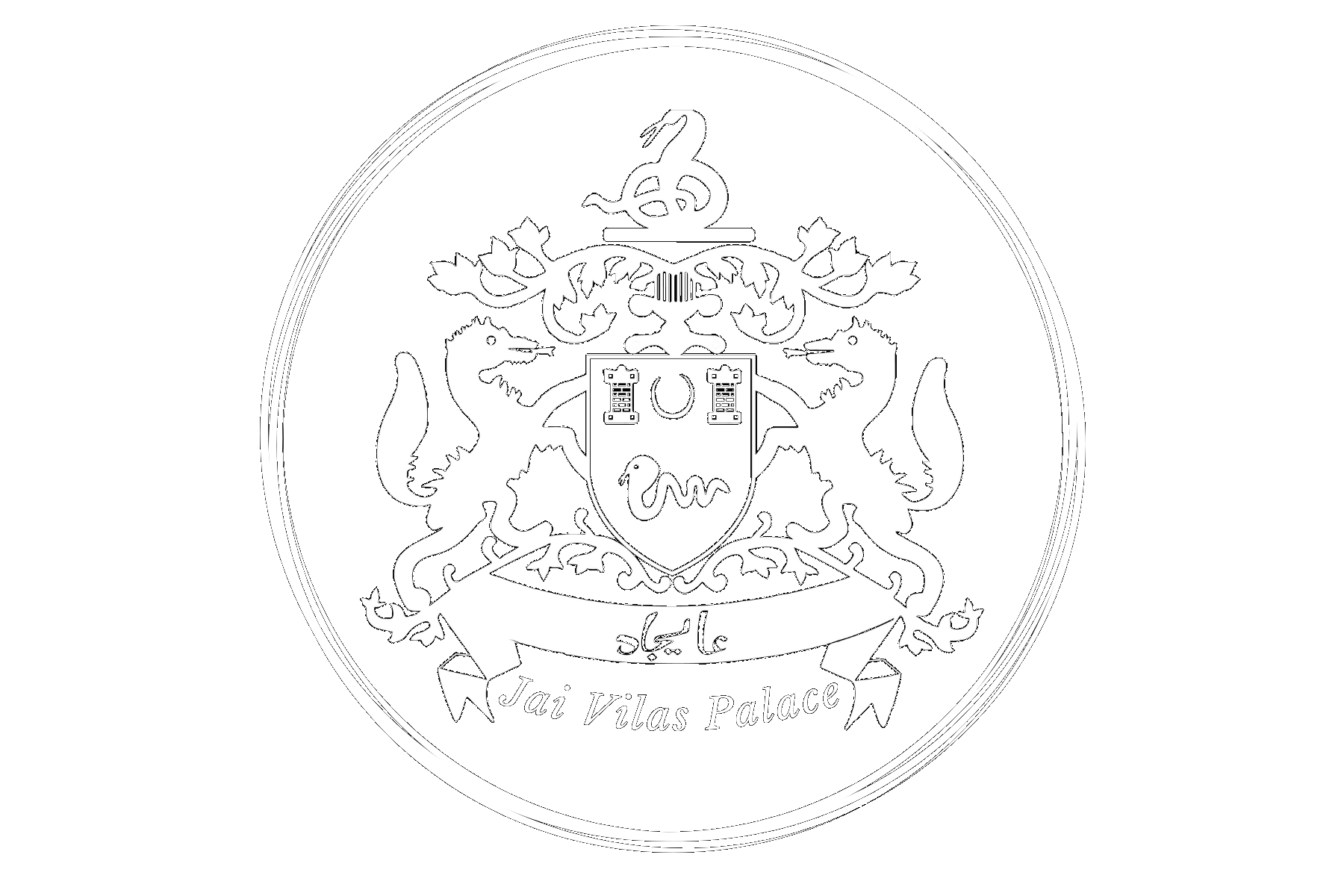




Textile Gallery
The Chanderi weavers were patronised by Maharaja Madho Rao Scindia who invested in this project emotionally, financially and by all other feasible means. From 1910 Chanderi Sarees got special attention of the Scindia rulers and the gold motif was introduced. The most popular and traditional kind of motif( Butti) is Asharfi Butti, which is in shape of Asharfi (woven in pure gold and silver Zari and now a days it is also woven in Tested Zari). This hand holding and support by the Scindias continues even today. As Madho Maharaj got personally involved in the promotion of Chanderi similarly the present Scindias have not just believed in the range of possibilities that this craft offers but have actively taken it upon themselves to invest in
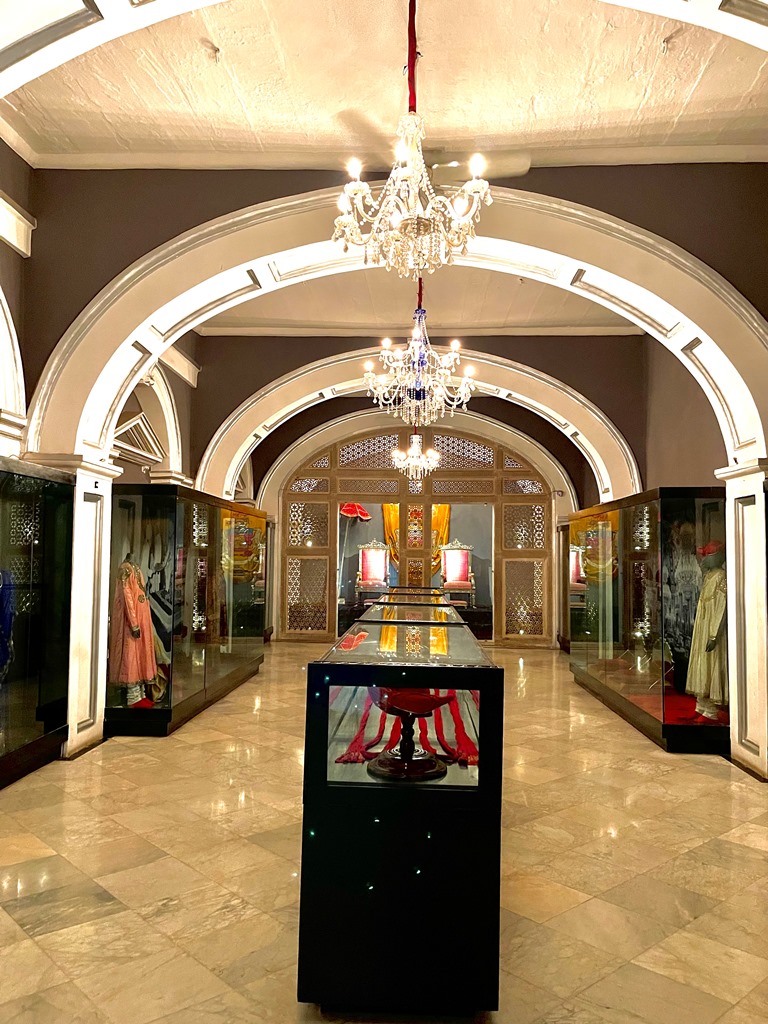
from the family that in popular perception is known to have been best friends of the poor and the less privileged and is indeed so in actuality. His name is Shrimant Jyotiraditya Madhavrao Scindia the current titular Maharaja of Gwalior.
The Silver Buggy Gallery
Museum is filled with immense valuable objects like Silver Buggy the royal carriage of the Scindia family which was made around late 19th century during the regime of HH Madho Rao Scindia. It is based on a wooden and metal frame and contains 50 kilograms of silver on it. A thick sheet of silver is embellished with representations of various objects and beings including sun, snake, floral pattern, fish, women, lions and angels. The upholstery of the carriage is done in golden brocade and velvet laces, with seats for four people along with separate seats for attendants and charioteer. The silver carriage is still used on important ceremonies like
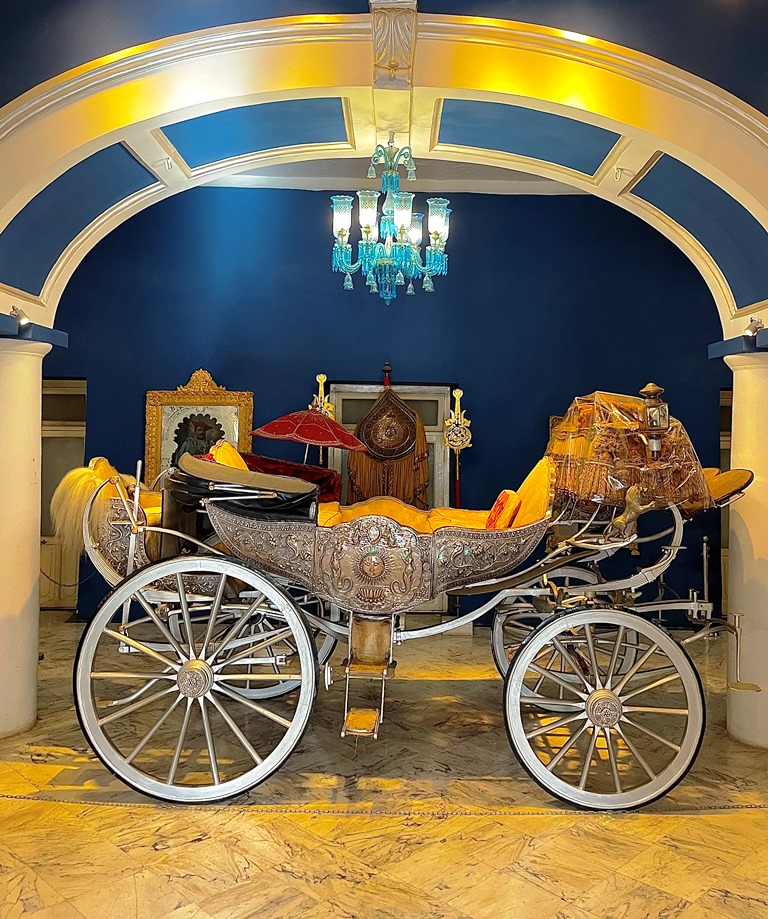
Dussehra Puja and Royal Weddings which makes it an object of religious and auspicious significance.
Banquet Hall
HH Maharaja Madho Rao Scindia commissioned a Silver Train with SCINDIA initial inscribed on it.The silver train carrying refreshments like dry fruits and wine chugs on the tracks placed on the central table at the banquet hall. The banquet hall or the European dining room has three tables. The first table for Non-vegetarian dishes, the second one for vegetarian dishes and the centre one for drinks and refreshments. Earlier the train with refreshment runs on battery but now it it runs on electric supply and it would stop once the lid of the container with refreshments was lifted. it, by hand holding who need it the most, the financially week resource less weavers. Chanderi was suffering from institutional neglect and political apathy to the cause of this small town’s welfare until a change maker arrived,
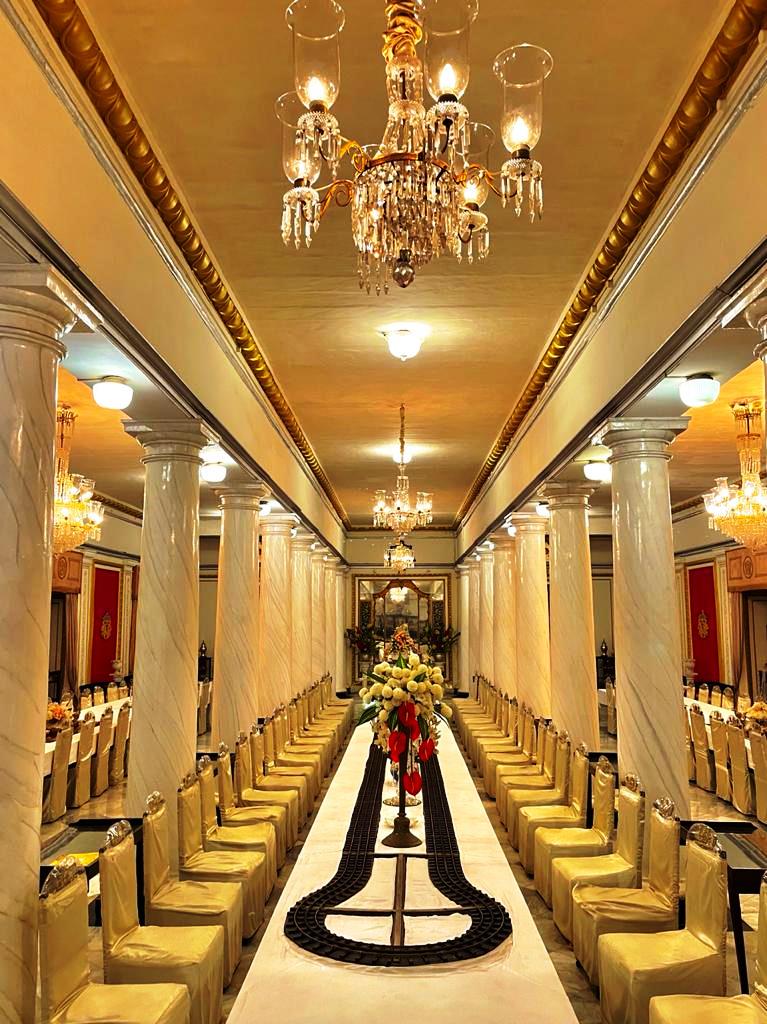
Persian Beauty
The Kirman Masha’ir carpet belongs to a family of carpets produced in the south eastern Iranian city of Kerman and it is one among the greatest carpets in the world. Iranian carpets basically have two versions –one depicting old rulers of Iran and the second depicting famous people of the world. It is a pictorial carpet which depicts Jesus at the top with a Greek temple like architecture at the background. The medallion and the main field are covered with portraits of Persian Shahs, Emperors and European officials. There are a total of 185 portraits including that of Napoleon, Jesus and a young Shah of Iran in a military uniform, depicted at the bottom area. Each of the woven portraits is separately numbered in Persian. The name on the medallion’s periphery corresponds to the

numbers that are marked on the images. Similarly the text in Arabic woven inside the inner guard corresponds to the names given against the kings and famous people occupying both medallion and field design. The carpet was woven by Muhammad Ibn Ja’far which is also signed at the base of field.
DURBAR HALL
The ornately gilded and majestic Darabāra Hall was used by the Scindia family as their Royal Court to hold receptions and stately function/events for royal guests and eminent dignitaries. The columns of the hall are influenced by the Corinthian order and the dome of the Durbar Hall was modelled on that of St.Peter’s Cathedral in Rome. Amongst the many fascinating features of the hall, facts like the usage of approximately 560 kilograms of pure melted gold in decorating every corners of the hall, the presence of 90 Feet long and 48 feet wide carpet which was woven within the hall by captives kept in the palace jail, as no carpet manufacturer was found able to produce carpet of such vast dimensions and the presence of two of the largest chandelier
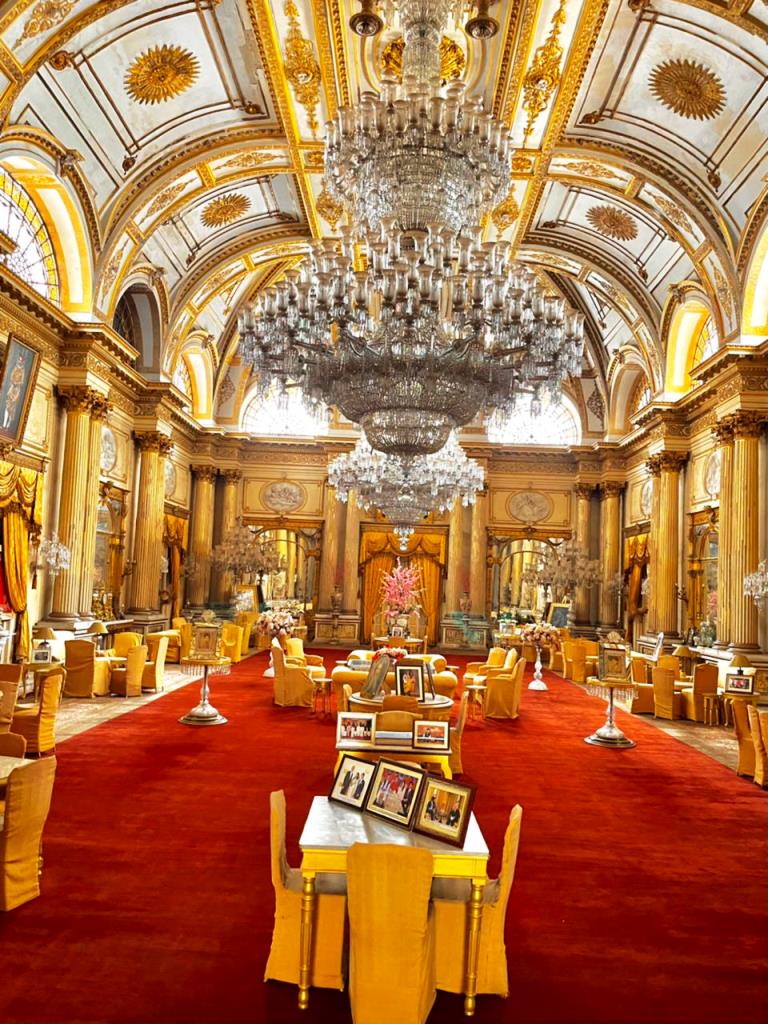
ever manufactured by F. & C. Osler company of Birmingham, England are worth a mention. F. & C. Osler was one of the two companies that provided most of the glass furniture to Royal Palaces in India.
MADHAV GALLERY
Shrimant Maharaja Madhav Rao Scindia was a compassionate leader, with a progressive and egalitarian mindset that defined the Hindavi Swaraj his ancestors fought for. He was named after the greatest Maratha warrior of the Scindia family known as ``The Great Maratha`` Madhavji Scindia. In the gallery dedicated to Shrimant Madhav Rao we have a great collection, or art, photographs etc related to him.
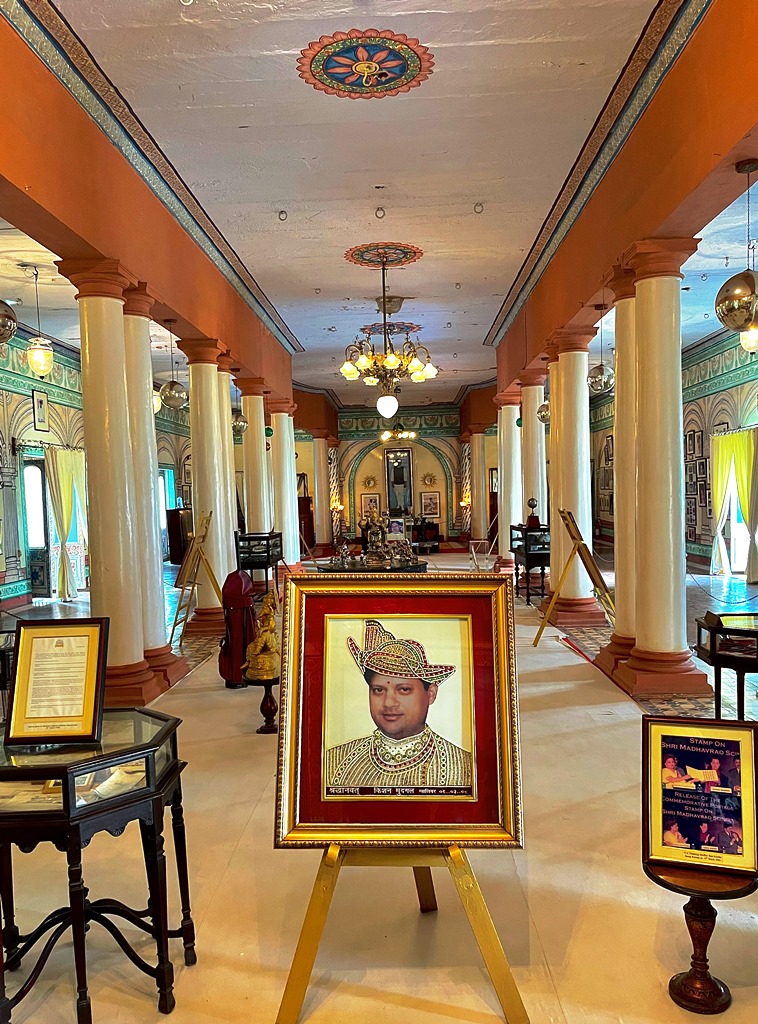
THE FRENCH RECEPTION HALL
These galleries showcase part of the extensive European furniture collection held at Jai Vilas palace Many of these pieces were chosen on a tour or the capital cities of Europe made in Italy 1870's. which was specially arranged to acquire decorative arts and furniture to compliment the European design of the palace. This room contains a suite of furniture which is likely to have been purchased from France. The Neo-classical features on the legs: as well as the torch and quiver eras! which decorates the top of the furniture are features which are particularly fashionable in French furniture design during the late 18th and 19th Centuries. Also popular in Europe at that time was· neo-classical sculpture. The collection is displayed in the small adjoining`` room. This affiliation with Europe extended further than just an interest in the art with generations of Scindia Maharajas developing and
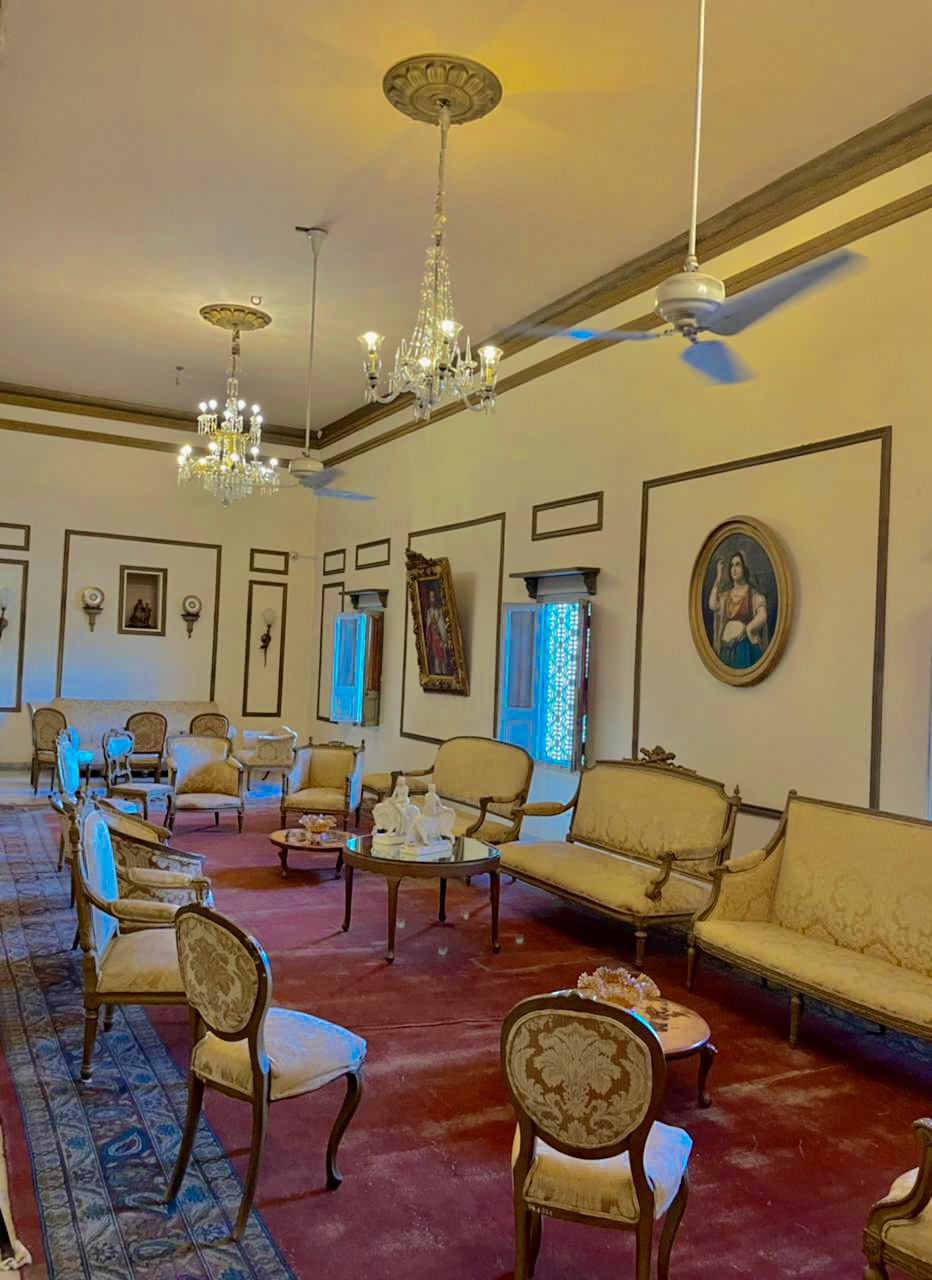
maintaining good relations with European states. This Is indicated here by portraits of the British King George and his wife Mary on the back wall of the gallery. In the past it was common for allied kings to exchange their portraits and these are likely to have been gifted to the Maharaja by King George himself. Such international relations may have lead Maharaja Jayaji Rao to construct Jai Vilas, enabling him to comfortably accommodate his many Europeans guests .
THE ROYAL NURSERY
This room contains some of the Nursery furniture and toys which belonged to the Scindia princes and princesses. Some of the pieces are over a hundred-years old, whilst others have been repainted for more recent royal children, such as the cupboard now decorated with Disney characters. The mobile horse and the crib have been in the family for many generations, and are likely to have been imported from Europe like much of the other furniture In the palace. The swan carriage Is an unusual piece, similar In appearance to a European pram, but with two handles at the front which makes it function like an Indian styled pulled Rickshaw.
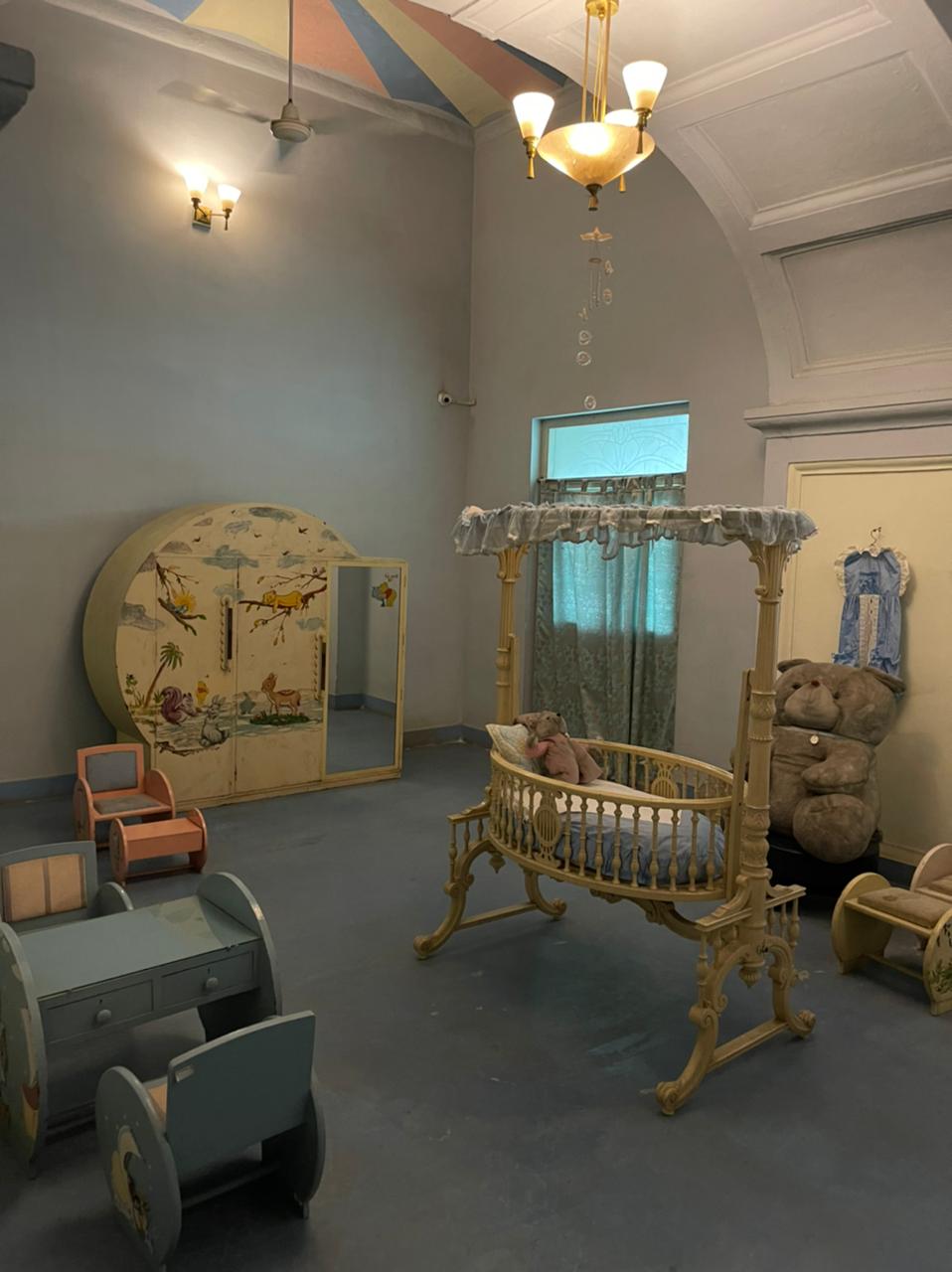
MAHARANI CHINKURAJE’S BEDROOM
The following suite belonged to Maharani Chinkuraje Scindia, the first wife of Maharaja Madhavrao Scindia I. Chinkuraje came from an important family in Gwalior and her father Sardar Madhavrao Mohite was first class Sardar of Scindia State, holding the fifth seat in Durbar. Maharani Chinkuraje was known for having a sharp mind. She loved reading and writing and could often be found at her desk, situated here on the right of the room. The Maharani took an active interest in affairs of state, running her own women's Durbar (Rani Durbar)
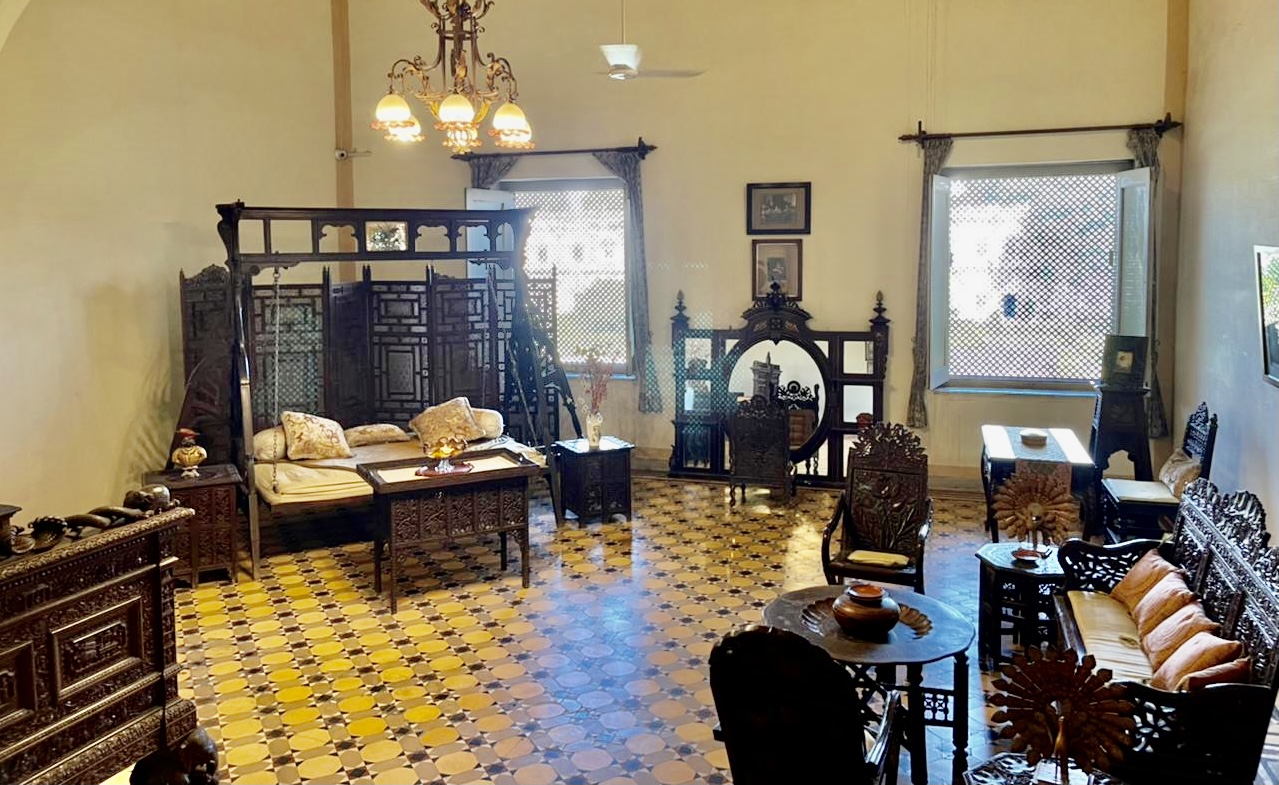
and it is believed that she even advised the Maharaj a himself on many matters. His state reforms have led to him being described as ‘the father of modern Gwalior’. and many now suggest that if he is the father, she must surely be the mother. The Maharaja ordered the furniture in this suite to be specially made to accommodate her smaller size, as she stood just 4 ‘3″ tall. Unlike her husband and his grandfather who built the palace, she was less interested in Western style things and had the furniture decorated with scenes from Hindu mythology, carved In an Indian style on local North India wood.
MAHARANI CHINKURAJE’S DRESSING ROOM.
Maharani Chinkuraje Scindia was known for being very elaborately dressed, often wearing highly decorated saris and strings of pearls and jewels. On meeting the Maharani, the Viceroy's wife Mary Countess of Minto remarked in her diary: ``The little wife Chinkuraje, was covered from head to toe with precious stones. Her dressing table was a mass of golden bottles, combs and scents. The row of tiny doll-like shoes, which were made for her in Paris, were the most fascinating sight of all``.
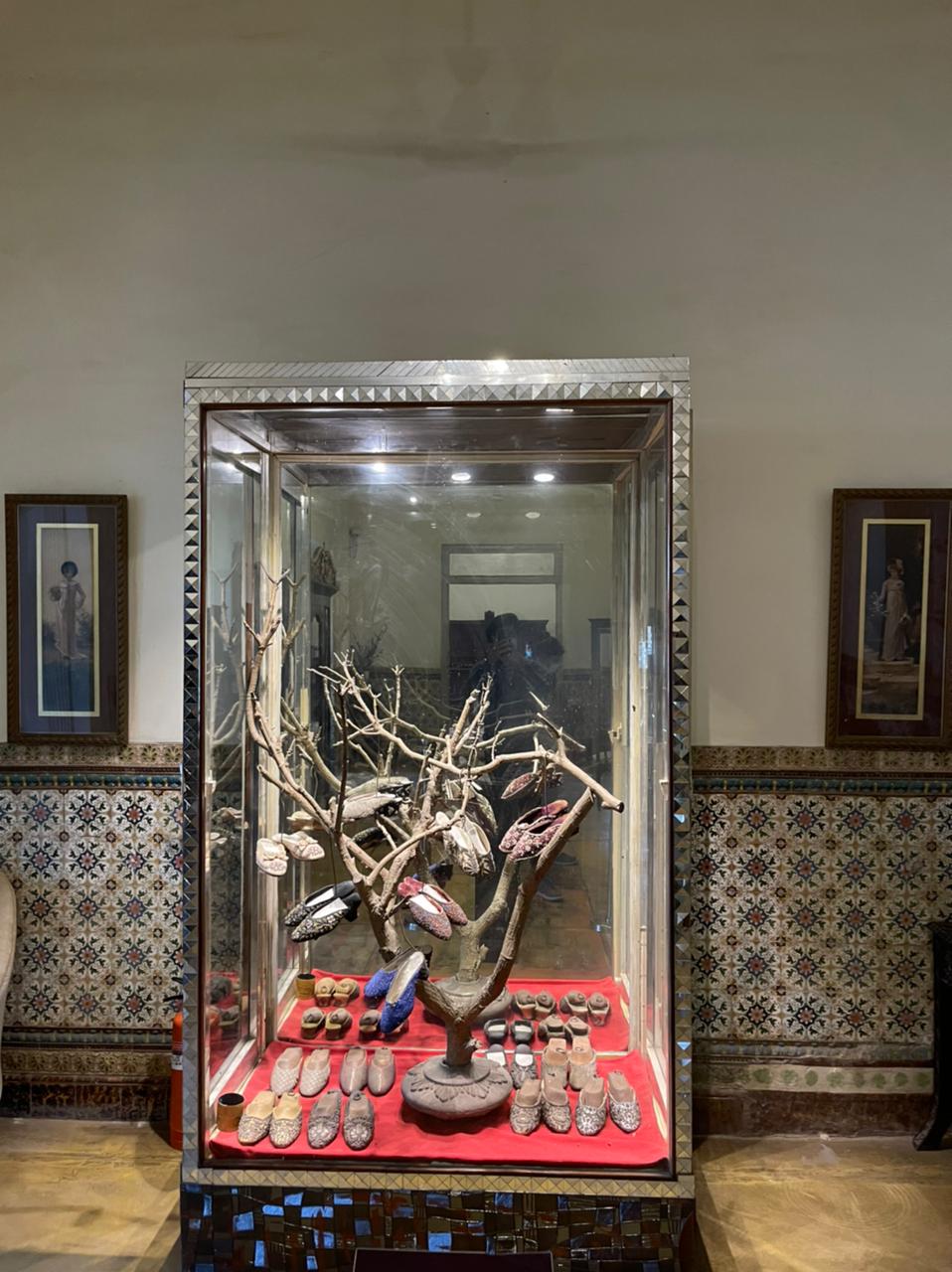
The Maharani’s dressing table, perfumes and shoes which were so admired by the countess can be seen here today in her dressing area.
